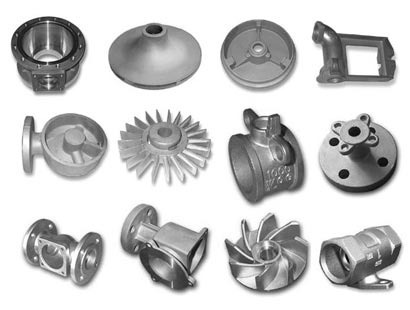Welcome to the Mechanicaltalks. Today we are going to learn about Cast iron and its types. We all know that cast iron is one of the most important material in the manufacturing industry. Each and every manufacturing unit is absolutely dependent upon it
No one can even imagine the entire world of engineering without the use of a cast iron.
So, don’t waste a single minute. Let’s take a look at the every aspect of “Cast iron and its types”
Introduction
Table of Contents
Cast iron is obtained by dissolving (remelting) pig iron with coke and lime in a furnace called cupola. It is basically a mixture of iron and carbon. The carbon content of cast iron varies from 1.7 to 4.5%. It can be available as free carbon (or graphite) or combined carbon (or cementite).
To know, Cast iron and its types. First learn that As cast iron is a brittle material, therefore, it cannot be used in those parts that suffer from shock. Cast iron structures that make it an important engineering target aimed at its low cost, good casting features, high pressure strength, wear resistance and excellent performance. The compressive strength of cast iron is far greater than that of tensile strength.
Effects of some materials on Cast iron
Cast iron also contains trace elements such as silicon, sulphur, manganese and phosphorus. The effects of these impurities on cast iron are as follows:
- Silicon
It can be present in cast iron up to 4%. It offers a free graphite texture that makes the metal soft and easy to work with.
- Sulphur
It makes the cast iron hard and brittle. It should be kept below 0.1% for most
foundry objectives.
- Manganese
It makes the cast iron metal white and strong. It is usually kept below 0.75%.
- Phosphorus
It helps with fusibility and fluidity in cast iron, but creates brittleness. It is rarely allowed to exceed 1%.
Types of cast iron
The most important types of cast iron are the following:
- Gray cast iron
It is a common trading type of iron with 3 to 3.5% carbon. The gray color is due to the fact that carbon is present in the form of free graphite. It has low strength, high compressive strength and no ductility. It can be easily machined.
In accordance with Indian standards, Gray cast iron is designated alphabetically by FG followed by a number indicating the minimum tensile strength in MPa or N / mm. For example FG 150 refers to a Grey cast iron with 150 MPa or N/mm^2 as minimum tensile strength.
- White cast iron
It is a type of cast iron with 1.75 to 2.3% carbon. The white colour is due to the fact that carbon is in the form of carbide (also known as cementite), which is a very hard metal. White iron cast has high tensile strength and low compressive strength.
- Chilled cast iron
It is a white cast iron produced by the rapid cooling of molten metal. Rapid cooling is commonly referred to as ‘chilling’ and the metal produced is known as chilled cast iron.
- Mottled cast iron
It is a product between a Gray and white cast iron in texture, colour and general properties.
- Malleable cast iron
It is obtained from white cast iron by a suitable heat treatment (i.e. annealing). In accordance with Indian standard specifications, the Malleable cast iron may be whiteheart, blackheart or pearlitic and designated by the alphabets WM, BM and PM respectively.
These indicators are followed by a numeric indicating the minimum tensile strength of MPa or N/mm^2. For example, the WM350 ‘describes the white metal malleable cast iron of 350 MPa as minimum tensile strength.
- Nodular or spheroidal graphite cast iron
It is also called ductile cast iron or high strength cast iron. This type of cast iron is obtained by adding small amounts of magnesium (0.1 to 0.8%) to melten grey iron just after tapping.
By standard Indian specification, nodular or spheroidal graphite cast iron is designated with the words “SG” followed by numbers indicating the minimum tensile strength in MPa or N / mm² and the percentage elongation.
For example, SG 400/15 refers to a spheroidal graphite cast iron with 400 MPa as minimum tensile strength and 15 percent elongation.
- Alloy cast iron
It is produced by adding alloying elements such as nickel, chromium, molybdenum, copper and vanadium in sufficient quantities. Alloy cast iron has special properties such as increased strength, high wear resistance, corrosion resistance or heat resistance.
Conclusion : Cast iron and its types
So, today we have learnt about Cast iron and its types. Hope you all like this information. Now its time to wrap up this article.
If this was helpful to you even a little bit, then kindly do share this with your mates. If you have any queries or suggestions then comment us or simply contact us through email.
FAQ’s
In mottled cast iron, slow cooling rate is used to obtain
Grey cast iron
The gray cast iron has
High thermal conductivity
Nodules of graphite are observed in the microstructure of
Spheroidal cast iron
Rosettes of tempered carbon in the matrix of ferrite are observed in the microstructure of
Malleable cast iron
Presence of which material in a gray cast iron causes reduced ductility
Graphite
What would be the tensile strength of gray cast iron of class 20?
138 MPa
Which of the following materials cannot be used for making a core box?
Zinc
What is the temperature in a core box typically?
180°C – 260°C
Which of the following types of iron represents purest form of iron in the manufacturing process?
Wrought iron
Which of the following parts are mostly manufactured by using grey cast iron?
Engine blocks
